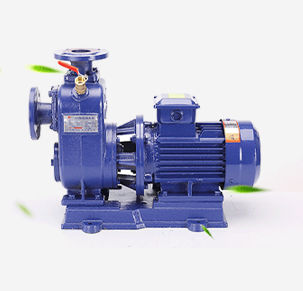Turkmen
- Afrikaans
- Albanian
- Amharic
- Arabic
- Armenian
- Azerbaijani
- Basque
- Belarusian
- Bengali
- Bosnian
- Bulgarian
- Catalan
- Cebuano
- Corsican
- Croatian
- Czech
- Danish
- Dutch
- English
- Esperanto
- Estonian
- Finnish
- French
- Frisian
- Galician
- Georgian
- German
- Greek
- Gujarati
- Haitian Creole
- hausa
- hawaiian
- Hebrew
- Hindi
- Miao
- Hungarian
- Icelandic
- igbo
- Indonesian
- irish
- Italian
- Japanese
- Javanese
- Kannada
- kazakh
- Khmer
- Rwandese
- Korean
- Kurdish
- Kyrgyz
- Lao
- Latin
- Latvian
- Lithuanian
- Luxembourgish
- Macedonian
- Malgashi
- Malay
- Malayalam
- Maltese
- Maori
- Marathi
- Mongolian
- Myanmar
- Nepali
- Norwegian
- Norwegian
- Occitan
- Pashto
- Persian
- Polish
- Portuguese
- Punjabi
- Romanian
- Russian
- Samoan
- Scottish Gaelic
- Serbian
- Sesotho
- Shona
- Sindhi
- Sinhala
- Slovak
- Slovenian
- Somali
- Spanish
- Sundanese
- Swahili
- Swedish
- Tagalog
- Tajik
- Tamil
- Tatar
- Telugu
- Thai
- Turkish
- Turkmen
- Ukrainian
- Urdu
- Uighur
- Uzbek
- Vietnamese
- Welsh
- Bantu
- Yiddish
- Yoruba
- Zulu
Telephone: +86 13120555503
Email: frank@cypump.com
Aug . 20, 2024 16:03 Back to list
Innovative Peristaltic Pump Solutions for Efficient Slurry Transfer Applications
The Peristaltic Slurry Pump An Overview
Peristaltic slurry pumps are specialized devices designed to move viscous liquids, slurries, and other challenging materials through a variety of applications. Utilizing a unique mechanism that mimics the human digestive system's peristalsis, these pumps are versatile and efficient for transporting a range of substances, especially in industries like mining, wastewater treatment, and food processing.
Working Principle
The principle behind a peristaltic pump is relatively straightforward. The pump consists of a flexible tube positioned within a rigid casing. As rollers or shoes attached to a rotating rotor move along the tube, they compress it and create a vacuum that pulls the slurry into the pump. Once the rollers pass, the tube returns to its original shape, which effectively pushes the slurry forward. This action creates a continuous flow that makes peristaltic pumps particularly effective for handling slurries that contain solid particles, such as mud or gravel, without damaging the pump components.
One of the primary advantages of this design is that only the interior of the tube contacts the fluid being pumped, significantly reducing wear and tear on the pump. This attribute also minimizes the risk of contamination, making peristaltic pumps suitable for sanitary applications in food and pharmaceutical industries.
Applications
The versatility of peristaltic slurry pumps allows them to be employed in diverse fields. In the mining sector, they efficiently manage the transportation of mineral slurries, allowing for the extraction of minerals with high solid-content fluid. In wastewater treatment, these pumps facilitate the movement of sludge and other waste materials through various processes while maintaining a low risk of clogging.
In the chemical processing industry, peristaltic pumps are used to accurately dose chemicals into moving streams. Their ability to maintain consistent flow rates ensures that the right amounts of chemicals are dispensed, which is crucial for maintaining product quality and safety. Additionally, their ease of maintenance is a significant advantage, as hose replacements are usually the only necessary upkeep.
peristaltic slurry pump

Advantages
Peristaltic pumps offer several benefits compared to other types of pumps. One key advantage is their self-priming capability, which permits them to lift fluids from lower levels without the need for additional equipment. This makes them especially useful in applications where the pump must be positioned above the fluid source.
Another notable feature is their ability to handle shear-sensitive materials gently. Many traditional pumps can be too aggressive, breaking down delicate solids or causing emulsions to separate. Peristaltic pumps, on the other hand, ensure a smooth flow without damaging the material being transported.
Furthermore, the operation of peristaltic pumps tends to be quieter compared to other pumping methods, which can be a significant factor in noise-sensitive environments.
Challenges and Considerations
Despite their numerous advantages, peristaltic slurry pumps are not without challenges. Their throughput capacity is generally lower than that of positive displacement or centrifugal pumps, which can be a limiting factor in high-demand applications. Additionally, while the hoses have a long lifespan, they do experience wear over time and need regular replacement to maintain efficiency.
In conclusion, peristaltic slurry pumps are a robust solution for the effective transportation of challenging fluids in various industries. Their unique design, ease of maintenance, and ability to handle a wide range of materials make them a preferred choice in many applications. As technology continues to advance, these pumps will remain integral to numerous industrial processes, ensuring that they meet the evolving needs of modern production and manufacturing systems.
-
Horizontal Split Case Pump with GPT-4 Turbo | High Efficiency
NewsAug.01,2025
-
ISG Series Pipeline Pump - Chi Yuan Pumps | High Efficiency, Durable Design
NewsAug.01,2025
-
Advanced Flue Gas Desulfurization Pump with GPT-4 Turbo | Durable & Efficient
NewsJul.31,2025
-
ISG Series Vertical Pipeline Pump - Chi Yuan Pumps | Advanced Hydraulic Design&Durable Construction
NewsJul.31,2025
-
ISG Series Vertical Pipeline Pump - Chi Yuan Pumps | Energy Efficient & Low Noise
NewsJul.31,2025
-
pipeline pump - Chi Yuan Pumps Co., LTD.|High Efficiency&Low Noise
NewsJul.31,2025










